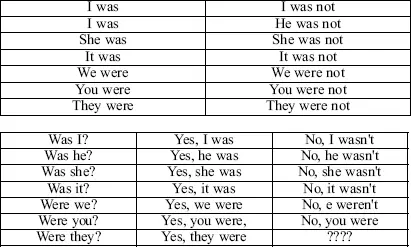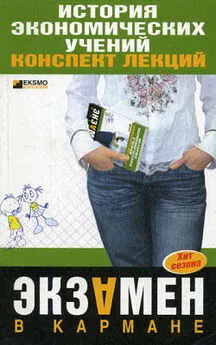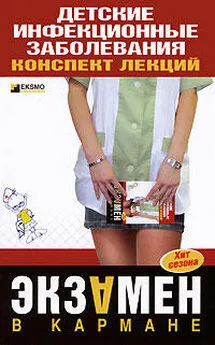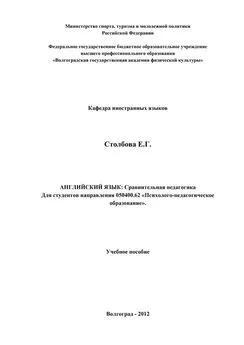Елена Беликова - Английский язык для медиков: конспект лекций
- Название:Английский язык для медиков: конспект лекций
- Автор:
- Жанр:
- Издательство:Конспекты, шпаргалки, учебники «ЭКСМО»b4455b31-6e46-102c-b0cc-edc40df1930e
- Год:2007
- Город:Москва
- ISBN:978-5-699-20181-5
- Рейтинг:
- Избранное:Добавить в избранное
-
Отзывы:
-
Ваша оценка:
Елена Беликова - Английский язык для медиков: конспект лекций краткое содержание
Представленный вашему вниманию конспект лекций предназначен для подготовки студентов медицинских вузов к сдаче экзамена. Книга включает в себя полный курс лекций по английскому языку, написана доступным языком и будет незаменимым помощником для тех, кто желает быстро подготовиться к экзамену и успешно его сдать.
Английский язык для медиков: конспект лекций - читать онлайн бесплатно ознакомительный отрывок
Интервал:
Закладка:
18. My sister… at home.
19… this your cat?
20. She… an actress.
21. This… my bag.
22. He… professor.
23. Helen… a singer.
24… you an engineer?
25. He… Russian.
Переведите на английский язык, употребляя глагол to be в Present Simple.
1. Я ученик. Я в школе.
2. Мой брат художник. Он не инженер.
3. Моя сестра на работе. Она врач.
4. Он студент, а не учитель.
5. Вы студент? – Нет, я ученик.
6. Моя сестра дома. Она больна.
7. Мы не в школе. Мы дома.
8. Мой брат ученик. Он в школе.
9. Ваша мама дома? – Нет, она на работе.
10. Ваш двоюродный брат дома? – Нет, он в школе.
11. Твоя сестра здорова сейчас? – Да, она здорова.
12. Ваша сестра учительница? – Нет, она студентка.
13. Твой папа на работе? Нет, он на даче.
14. Твоя сестра машинистка? – Да. Она машинистка.
15. Моя мама не учительница. Она врач.
16. Чья это ручка? – Это моя ручка.
17. Чья это книга? – Это ваша книга.
18. Чей это стол? – Это стол моего брата.
19. Чья это сумка? – Это сумка моей мамы.
20. Чей это карандаш? – Это карандаш моей сестры.
21. Это твоя тетрадь? – Да, это моя тетрадь.
22. Это тетрадь твоего брата? – Нет, это моя.
23. Где ваш стол? – Он посередине комнаты.
24. Где твоя ручка? – Она в моем кармане.
25. Где твоя тетрадь? – Она на столе.
26. Мой дедушка не ученый, он геолог.
Answer the questions.
1. What is the cell consists of?
2. What is a membrane?
3. Is cell the smallest independent unit of the body?
4. What can be grown in test – tubes?
5. What can various tissues form, when they are together?
6. What are the organ system consist of?
7. What are cell characterized by?
8. What are cell organelles?
9. What ate membranes?
10. What is the cytoplasm?
Make the sentences of your own using the new words (10 sentences).
Find the verb to be in the text. Explain why it is used in such a way?
Find one word, which is a little bit different in meaning from others (найдите одно слово, которое немного отличается от других по смыслу):
1) a) cell; b) body; c) flower;
2) a) life; b) plate; c) people;
3) a) test-tube; b) microscope; c) pen;
4) a) curtain; b) body; c) tissue;
5) а) spoon; b) kidney; c) liver.
ЛЕКЦИЯ № 35. Pharynx and related areas
The pharynx is a passageway shared by the digestive and respira tory systems. It has lateral, posterior, and medial walls through out, but is open interiorly in its upper regions, communicating with the nasal cavity and the oral cavity. The anterior wall of the laryngopharynx is formed by the larynx. The pharyngeal wall con sists of a mucosa, a fibrous layer, and a muscularis, which is com posed of an inner longitudinal layer (i. e., stylopharyngeus, palatopharyngeus, salpingopharyn-geus) and an outer circular layer (i. e., superior, middle, inferior constrictor muscles).
Nasopharynx is the region of the pharynx located directly poste rior to the nasal cavity. It communicates with the nasal cavity through the choanae (i. e., posterior nasal apertures).
The torus tubarius is the cartilaginous rim of the auditory The pha-ryngeal recess is the space located directly above and behind the torus tubarius; it contains the nasopharyngeal tonsil. The salpingopharynge-al fold is a ridge consisting of mucosa and the underlying salpingopha-ryngeus muscle, which runs down the wall of the pharynx from the torus tubarius.
Oropharynx is the region of the pharynx located directly posterior to the oral cavity. It communicates with the oral cavity through a space called the fauces. The fauces are bounded by two folds, consisting of mucosa and muscle, known as the anterior and posterior pillars.
The anterior pillar of the fauces, also known as the palatoglossal fold, contains the palatoglossus muscle.
The posterior pillar of the fauces, also known as the palatopharyn-geal fold, contains the palatopharyngeus muscle. The tonsillar bed is the space between the pillars that houses the palatine tonsil.
Laryngopharynx is the region of the pharynx that surrounds the larynx. It extends from the tip of the epiglottis to the cricoid car tilage. Its lateral extensions are known as the piriform recess.
Oral cavity: the portion of the oral cavity that is posterior to the lips and anterior to the teeth is called the vestibule. The oral cavi ty proper has a floor formed by the mylohyoid and geniohyoid muscles, which support the tongue. It has lateral walls, consisting of the buccinator muscles and buccal mucosa, and a roof formed by the hard palate anteriorly and the soft palate posteriorly. Its posterior wall is absent and is replaced by an opening to the oropharynx, which is flanked by the pillars of the fauces.
The palate separates the nasal and oral cavities.
Hard palate is formed by the palatine process of the maxilla and the horizontal palate of the palatine bone. Its mucosa is supplied with sensory fibers from CN V2.
Soft palate consists of a fibrous membrane, the palatine aponeuro-sis, covered with mucosa. The portion that hangs down in the midline is the uvula, which contains the musculus uvulae. Two additional muscles (i. e., levator palati, tensor palati) insert into the palatine aponeurosis.
The tongue is a mobile, muscular organ necessary for speech. It is divisible into an anterior two-thirds and a posterior one-third by the sulcus terminalis.
Muscles of the tongue. These include the intrinsic and extrinsic muscles (i. e., palatoglossus, stylogiossus, hyoglos – sus, genioglos-sus). All of the muscles are innervated by CN XII except the palatoglossus, which is supplied by CN X. Arterial supply: The tongue is supplied by the lingual branch of the external carotid aitery.
Venous drainage. The lingual veins, which lie on the under-surface of the tongue, drain to the internal jugular veins.
Lymphatic drainage. The tip of the tongue drains to the submental nodes, and the remainder of the anterior two-thirds drains first to sub-mandibular, then to deep cervical nodes. The posterior one-third drains directly to deep cervi cal nodes.
New words
shared – разделенный
digestive – пищеварительный
anteriorly – раньше
upper – верхний
regions – области
communicating – взаимодействие
oral cavity – полость рта
anterior wall – передняя стенка
pharyngeal – глоточный
mucosa – слизистая оболочка
fibrous layer – волокнистый слой
longitudinal – продольный
circular layer – круглый слой
superior – выше
middle – середина
posterior nasal apertures – задние носовые апертуры
torus tubarius – трубный валик
auditory space – носоглоточный
nasopharyngeal tonsil – миндалина
fold – сгиб
Спряжение глагола to be (быть) в Past Simple Tense
(Past Indefinite Tense) Таблица 6.

Переведите на английский язык, используя таблицу 6.
1. Я был учеником.
2. Он был летчиком.
3. Она была доктором.
4. Мы были школьниками.
5. Они были рабочими.
6. Ты был рабочим.
7. Они были учениками.
8. Я был дома.
9. Он был в школе
10. Она была в кино?
11. Мы были в парке.
12. Они были в театре?
13. Она была молодая в то время?
14. Он был старый.
15. Она не была учительницей.
16. Они были сильные.
17. Она была больна.
18. Вы были больны?
19. Он был болен?
20. Я не был болен.
21. Я был болен вчера.
22. Она не была больна.
23. Мы были в кино.
24. Они не были в кино.
25. Они не были в школе.
26. Они были дома.
27. Вы были в парке вчера?
28. Он был в школе вчера?
29. Он был рабочим.
30. Она была актрисой.
Answer the questions.
1. What is the pharynx?
2. What shares the pharynx?
3. What has the pharynx?
4. What forms the anterior wall of the laryngopharynx?
5. What the pharyngeal wall con sists of?
6. What is nasopharynx?
7. Where is nasopharynx located?
8. What is the torus tubarius?
9. What is located directly above and behind the torus tubarius?
10. What is located between the pillars that houses the palatine tonsil?
Make the sentences of your own using the new words (10 sentences). Find the verb to be in the text. Explain why it is used in such a way?
ЛЕКЦИЯ № 36. Oral cavity
The oral cavity forms in the embryo from an in-pocketing of the skin, stomodeum; it is, thus, lined by ectoderm. Functionally, the mouth forms the first portion of both the digestive and respiratory systems. Various special structures are found in, or associated with, the mouth.
In humans the margins of the lips mark the junction between the outer skin and the inner mucous lining of the oral cavity. The roof of the mouth consists of the hard palate and, behind this, the soft palate which merges into the oropharynx. The lateral walls consist of the distensible cheeks. The floor of the mouth is formed principally by the tongue and the soft tissues that lie between the two sides of the lower jaw, or mandible.
The tongue, a muscular organ in the mouth, provides the sense of taste and assists in chewing, swallowing, and speaking. It is firmly anchored by connective tissues to the front and side walls of the pharynx, or throat, and to the hyoid bone in the neck.
The posterior limit of the oral cavity is marked by the fauces, an ap-perture which leads to the pharynx. On either side of the fauces are two muscular arches covered by mucosa, the glossopalatine and pharyngo-palatine arches; between them lie masses of lymphoid tissue, the tonsils. Hiese are spongy lymphoid tissues composed mainly of lympho-cytic cells held together by fibrous connective tissue. Suspended from the posterior portion of the soft palate is the soft retractable uvula. The palate develops from lateral folds of the primitive upper jaw. The palate of mammals consists of two portions. The hard palate, more anterior in position, underlies the nasal cavity. The soft palate hangs like a curtain between the mouth and nasal pharynx.
Читать дальшеИнтервал:
Закладка:










